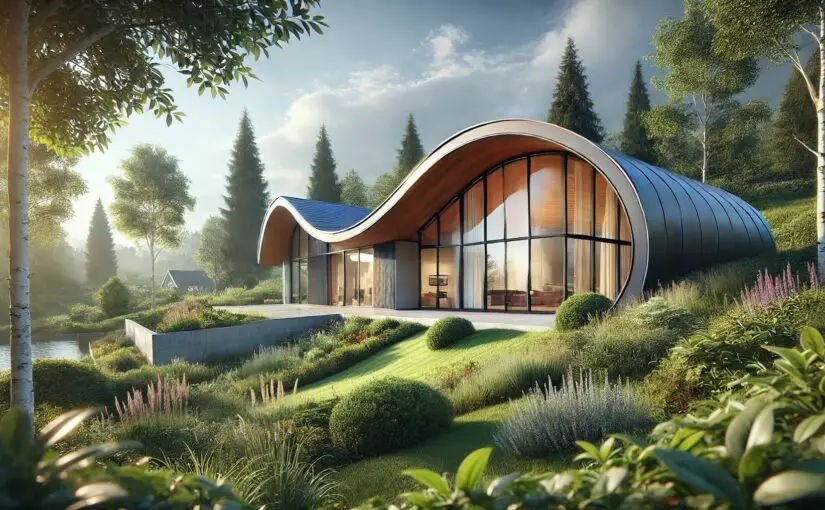When you think about roofs, what comes to mind? Maybe those standard flat or pitched roofs you see everywhere, covering houses like protective hats. But let me introduce you to a different kind of hat—a sleek, stylish, and incredibly practical one. Yes, I’m talking about curved roofs, also known as “Tonnendach” or the slightly fancier-sounding “Spitzbogentonnedach” in German. These architectural marvels are not just pretty to look at; they’re also masters of space-saving and efficiency. So, let’s explore why curved roofs might be the unsung heroes of modern architecture.
A Brief History of Curved Roofs: From Ancient Arches to Modern Marvels
Curved roofs aren’t exactly a new invention. In fact, humans have been using arches and curves in architecture for thousands of years. Think Roman aqueducts, medieval cathedrals, and even those iconic igloos made by our friends in the Arctic. The concept of using a curve to distribute weight and create spacious interiors has been around for ages. But what’s fascinating is how this ancient principle has evolved into the sleek, contemporary designs we see today.
Curved roofs, or Tonnendächer, began to rise in popularity in the industrial age, particularly in warehouses and factories where maximizing internal space was crucial. Fast forward to today, and you’ll find these roofs gracing everything from eco-friendly homes to high-end commercial buildings. But what’s so special about them?
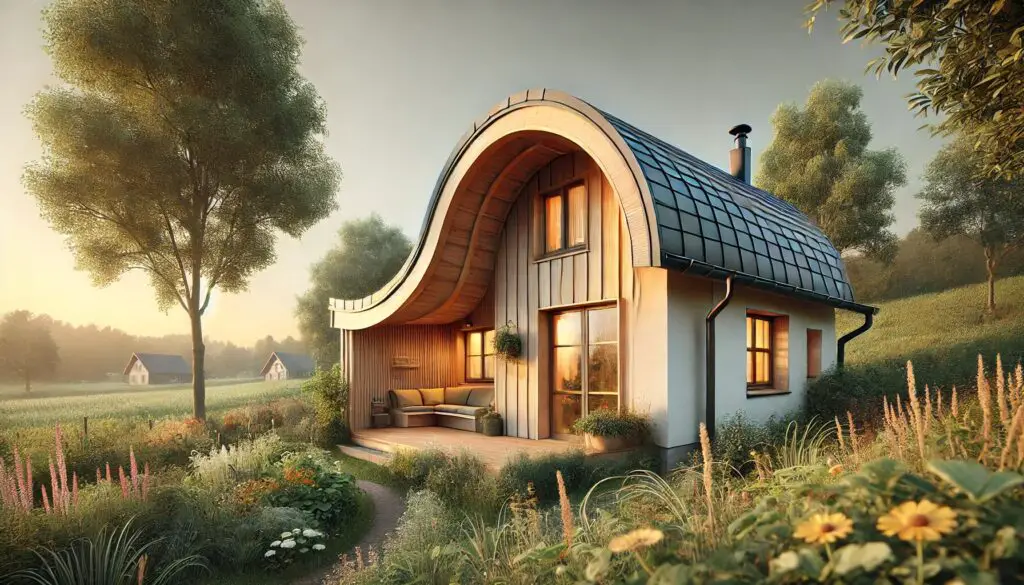
The Space-Saving Superpower of Curved Roofs
The first—and arguably the most compelling—reason why curved roofs are a brilliant architectural choice: is their space-saving ability. Imagine you have a rectangular box (or just think about a typical house). Now, if you place a flat roof on top, you’re essentially just capping off that space, right? Nothing wrong with that. But if you want to get a little fancy, you might opt for a pitched roof, which gives you a bit of extra storage in the attic, though the sloping sides can make this space awkward and less usable.
Now, picture replacing that flat or pitched roof with a gracefully curved one. The curve allows the roof to extend higher in the middle, creating more usable interior space beneath it without adding extra materials or height to the building. It’s like turning a low-ceilinged room into a vaulted sanctuary—all thanks to the magic of geometry. And because the walls are no longer required to support a heavy flat roof, you can open up your space even more with fewer internal supports. It’s a win-win!
Aesthetics Meet Functionality: The Beauty of the Curve
Okay, let’s not pretend that practicality is the only reason people fall in love with curved roofs. There’s something undeniably beautiful about the smooth, flowing lines of a “Tonnendach”. In a world full of rigid right angles, a curve adds a touch of elegance and fluidity. It’s like the architectural equivalent of going from a straight-laced business suit to a relaxed, yet sophisticated, evening gown.
Curved roofs can make even the most utilitarian buildings look stylish. Whether it’s a sleek modern home or a chic commercial space, the gentle arch of such a roof adds visual interest and a sense of movement. Plus, if you’re someone who likes to stand out from the crowd (and who doesn’t?), a curved roof is sure to make your building the talk of the town.
But aesthetics aren’t just about looking good; they’re also about how a space makes you feel. The graceful curves of a Tonnendach can create a sense of calm and harmony within a space. There’s a reason why people are drawn to arches and domes—they evoke a feeling of protection and openness at the same time. It’s a bit like being hugged by the architecture itself.
Material Matters: What to Use for Your Curved Roof
Now that you’re sold on the idea of a curved roof, let’s talk about what materials work best to achieve that elegant arch. Not all materials are created equal when it comes to bending and curving, so choosing the right one is crucial for both the look and longevity of your roof.
1. Steel: The Strong, Silent Type
Steel is a popular choice for curved roofs, especially in larger structures. It’s strong, durable, and can be shaped into smooth curves with relative ease. Plus, it’s resistant to pests, rot, and fire, making it a practical option for a variety of climates. However, steel does have a tendency to conduct heat, so proper insulation is a must if you’re using it for a residential project.
2. Wood: The Warm, Natural Option
For those who prefer a more organic look, wood can be an excellent choice. Laminated timber beams can be bent into gentle curves, giving your roof a warm, natural aesthetic. Wood also has the added benefit of being a great insulator, helping to keep your space cozy in the winter and cool in the summer. Just be sure to treat the wood properly to protect it from moisture and insects.
Here, I also like to mention a special method to build these roofs I came across in Germany.
The “Zollinger Bauweise”. It refers to a unique and innovative construction method for timber roofs, developed by German architect Friedrich Zollinger in the early 20th century. This method is characterized by a distinct pattern of intersecting timber beams that create a self-supporting, grid-like structure. The resulting roof structure is not only strong and efficient but also aesthetically pleasing, with a distinctive geometric pattern visible from the inside.
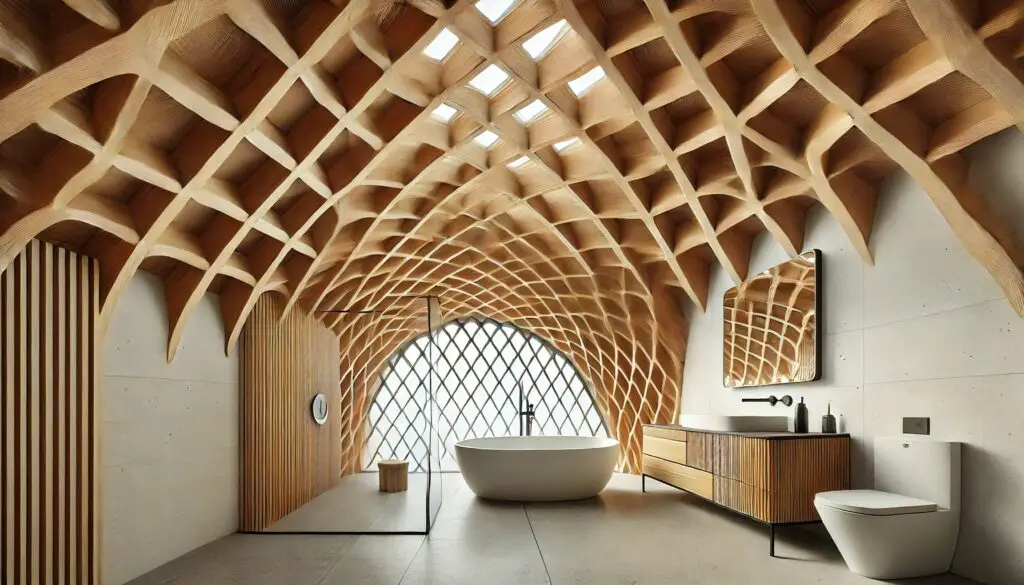
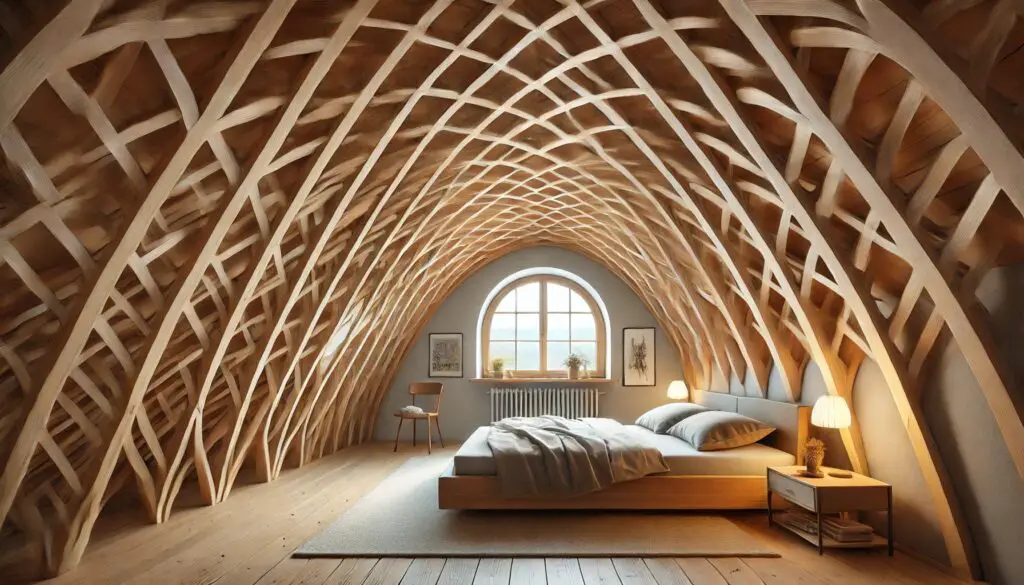
The Zollinger roof is constructed using short, thin timber beams arranged in a diamond or rhombus pattern. These beams are connected at the corners, creating a lattice-like framework that distributes loads evenly across the structure. This method allows for the use of smaller, more readily available timber pieces, making it an economical and sustainable choice.
Inside a building with a Zollinger roof, the interior view is dominated by the crisscrossing timber beams, which form a series of interlocking diamond shapes. This creates a striking visual effect, with the regular pattern of the beams contributing to a sense of order and harmony. The roof structure typically does not require additional internal supports, allowing for open, unobstructed interior spaces.
3. Concrete: The Solid, Sculptural Choice
Concrete might not be the first material that comes to mind when you think of curved roofs, but it’s actually a fantastic option for creating smooth, flowing shapes. When poured into molds, concrete can take on virtually any form, making it ideal for custom, one-of-a-kind designs. It’s also incredibly durable and low-maintenance, though it does require precise engineering to ensure the curve is structurally sound.
4. Copper and Zinc: The Stylish, Sustainable Picks
For those looking to make a statement (and who don’t mind a bit of splurge), metals like copper and zinc are excellent choices for curved roofs. These materials not only look stunning, with their sleek, reflective surfaces, but they’re also incredibly durable and recyclable. Over time, copper and zinc develop a beautiful patina, adding even more character to your roof.
Energy Efficiency: Curved Roofs to the Rescue
Fortunately, curved roofs are not just about saving space and looking good; they can also help you save energy. The smooth, continuous shape of a Tonnendach allows for better airflow, reducing the need for artificial ventilation and keeping your space naturally cooler in the summer.
Additionally, the increased interior volume provided by a curved roof can improve natural lighting. By incorporating skylights or clerestory windows along the curve, you can flood your space with daylight, reducing the need for artificial lighting during the day. And let’s not forget about the potential for solar panels—curved roofs offer a larger surface area and optimal angles for harnessing the power of the sun.
Speaking of sustainability, the materials you choose for your curved roof can also play a big role. Opting for renewable or recyclable materials, like timber or metal, can reduce the environmental impact of your building. And with proper insulation and ventilation, your curved roof can help lower energy consumption, making your home or business not just stylish, but also sustainable.
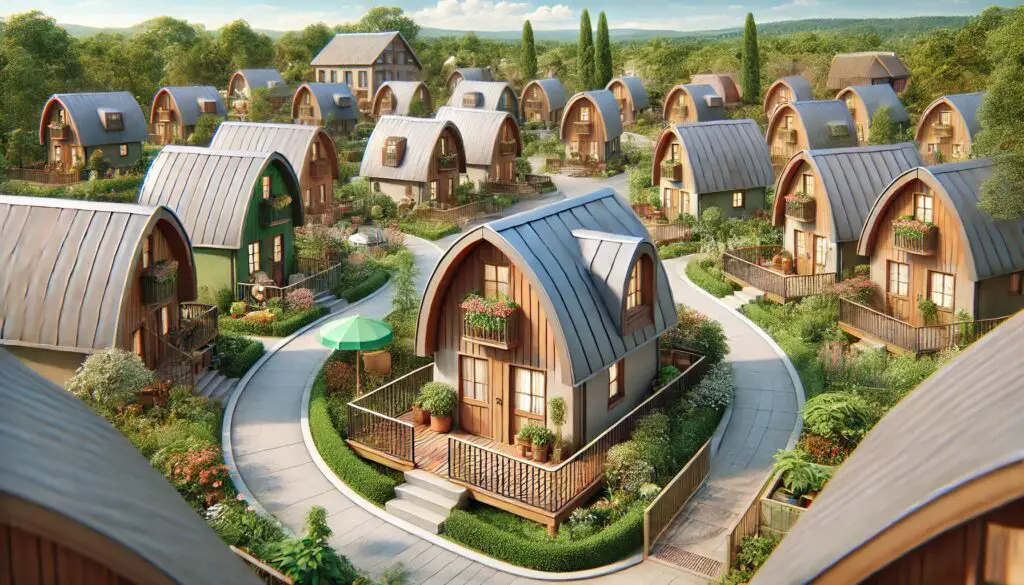
The Future is Curved: Why More Architects are Embracing Curved Roof Designs
Curved roofs are more than just a passing trend; they’re a sign of the future. As architects and builders continue to push the boundaries of what’s possible, we’re likely to see even more innovative uses of curved roof designs. From eco-friendly homes that blend seamlessly with their natural surroundings to cutting-edge commercial spaces that prioritize both form and function, the possibilities are endless.
One of the most exciting aspects of curved roofs is their versatility. Whether you’re building a tiny home or a sprawling complex, a Tonnendach can be adapted to suit your needs. And with advances in materials and construction techniques, creating these elegant, space-saving roofs is becoming more accessible than ever.
Conclusion: The Curve That Captures It All
Curved roofs are those elegant architectural wonders that combine style, efficiency, and sustainability in one graceful sweep. Whether you’re drawn to their space-saving superpowers, their aesthetic appeal, or their eco-friendly credentials, there’s no denying that curved roofs are a fantastic choice for anyone looking to build something truly special.
In a world of straight lines and sharp angles, why not embrace the curve? After all, life is full of twists and turns…
